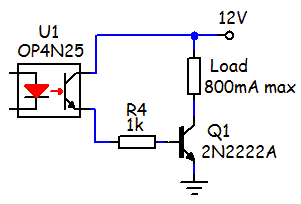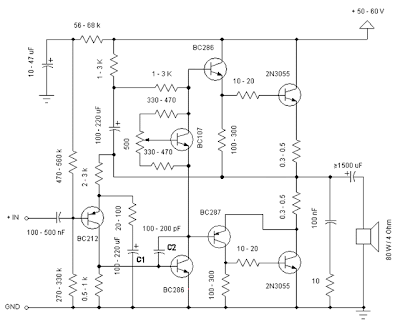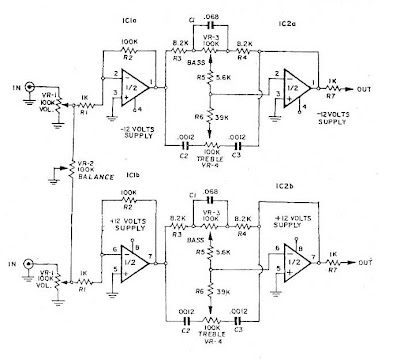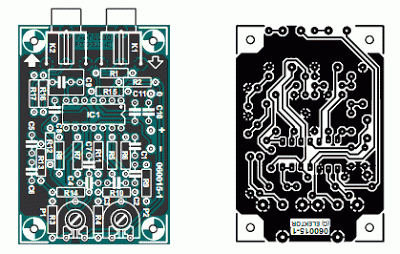Microcontroller more and more, to choose to use the PIC 16F microcontroller or AVR family ATMEGA 8535 just need googling that here. System works sama2 work on both the base 8-bit PIC or AVR ATMEGA. PIC or AVR basically the same microcontroller that has an analog input facilities in accordance with what I need. Feature owned by PIC and AVR ATMEGA too much alike. From the PIC feature on the analog input also has AVR ATMEGA. Feature ADC also owned by PIC or AVR ATMEGA even between PIC and AVR ATMEGA is sama2 have ADC with many channels all (plus mantab all). From the feature control PWM PIC and AVR ATMEGA also have. Well bener2 added mantab world with the presence of PIC microcontroller or AVR ATMEGA this, first MCS51 family still AT89C5x or AT89S5x wrote that in use. After dipikir2 should also be detailed feature between PIC and AVR ATMEGA with details.
PIC family Featured PIC16F87X
High performance RISC CPU
Only 35 single word instructions to learn
All single cycle instructions except for program branches the which are two cycle
Operating speed: DC - 20 MHz clock input DC - 200 ns instruction cycle
Up to 8K x 14 words of FLASH Program Memory,
Up to 368 x 8 bytes of Data Memory (RAM)
Up to 256 x 8 bytes of EEPROM Data Memory
Pinout compatible to the PIC16C73B/74B/76/77
Interrupt capability (up to 14 sources)
Eight level deep hardware stack
Direct, indirect and relative addressing modes
Power-on Reset (POR)
Power-up Timer (PWRT) and Oscillator Start-up Timer (OST)
Watchdog Timer (WDT) with its own on-chip RC oscillator for reliable operation
Programmable code protection
Power saving SLEEP mode
Selectable oscillator options
Low power, high speed CMOS FLASH / EEPROM technology
Fully static design
In-Circuit Serial Programming (ICSP) via two pins
Single 5V In-Circuit Serial Programming capability
In-Circuit Debugging via two pins
Processor read / write access to program memory
Wide operating voltage range: 2.0V to 5.5V
High Sink / Source Current: 25 mA
Commercial, Industrial and Extended temperature ranges
Low-power consumption:
- <0.6 ma typical @ 3v, 4 mhz
- 20 μA typical @ 3V, 32 kHz
- <1 μa typical standby current
Pin Diagram
Peripheral Features:
Timer0: 8-bit timer / counter with 8-bit prescaler
Timer1: 16-bit timer / counter with prescaler, can be incremented During SLEEP via external crystal / clock
Timer2: 8-bit timer / counter with 8-bit period register, prescaler and postscaler
Two Capture, Compare, PWM modules
- Capture is 16-bit, max. resolution is 12.5 ns
- Compare is 16-bit, max. resolution is 200 ns
- PWM max. resolution is 10-bit
10-bit multi-channel Analog-to-Digital converter
Synchronous Serial Port (SSP) with SPI (Master mode) and I2C (Master / Slave)
Universal Synchronous Asynchronous Receiver
Transmitter (USART / SCI) with 9-bit address detection
Parallel Slave Port (PSP) 8-bits wide, with external RD, WR and CS controls (40/44-pin only)
Brown-out detection circuitry for Brown-out Reset (BOR)
Featured AVR ATMEGA 8535
High-performance, Low-power AVR ® 8-bit Microcontroller
Advanced RISC Architecture
- 130 Powerful Instructions - Most Single Clock Cycle Execution
- 32 x 8 General Purpose Working Registers
- Fully Static Operation
- Up to 16 MIPS throughput at 16 MHz
- On-chip 2-cycle Multiplier
Nonvolatile Program and Data Memories
- 8K Bytes of In-System Self-Programmable Flash Endurance: 10,000 Write / Erase Cycles
- Optional Boot Code Section with Independent Lock Bits
In-System Programming by On-chip Boot Program
True Read-While-Write Operation
- 512 Bytes EEPROM Endurance: 100,000 Write / Erase Cycles
- 512 Bytes Internal SRAM
- Programming Lock for Software Security
Peripheral Features
- Two 8-bit Timer / Counters with Separate Prescalers and Compare Modes
- One 16-bit Timer / Counter with Separate prescaler, Compare Mode, and Capture Mode
- Real Time Counter with Separate Oscillator
- Four PWM Channels
- 8-channel, 10-bit ADC
8 Single-ended Channels
7 Differential Channels for TQFP Package Only
2 Differential Channels with Programmable Gain at 1x, 10x, or 200x for TQFP Package Only
- Byte-oriented Two-wire Serial Interface
- Programmable Serial USART
- Master / Slave SPI Serial Interface
- Programmable Watchdog Timer with Separate On-chip Oscillator
- On-chip Analog Comparator
Special Microcontroller Features
- Power-on Reset and Programmable Brown-out Detection
- Internal calibrated RC Oscillator
- External and Internal Interrupt Sources
- Six Sleep Modes: Idle, ADC Noise Reduction, Power-save, Power-down, Standby and Extended Standby
I / O and Packages
- 32 Programmable I / O Lines
- 40-pin PDIP, 44-lead TQFP, 44-lead PLCC, and 44-pad QFN / MLF
Operating Voltages
- 2.7 - 5.5V for ATmega8535L
- 4.5 - 5.5V for ATmega8535
Speed Grades
- 0 - 8 MHz for ATmega8535L
- 0-16 MHz for ATmega8535


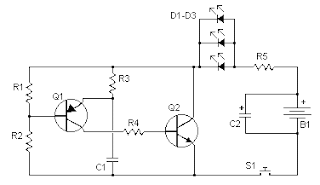

 Parts:
Parts: